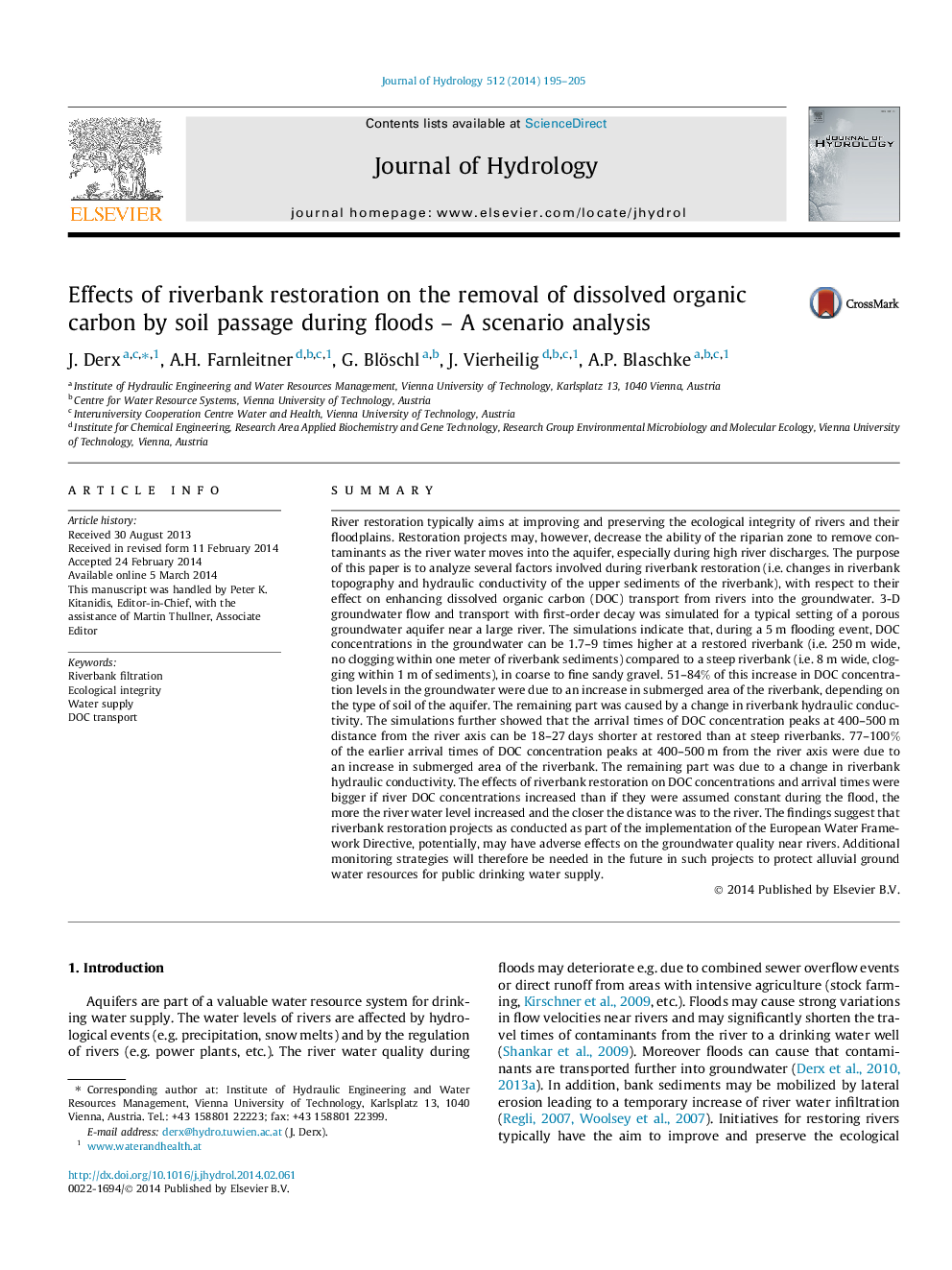| کد مقاله | کد نشریه | سال انتشار | مقاله انگلیسی | نسخه تمام متن |
|---|---|---|---|---|
| 6413133 | 1629936 | 2014 | 11 صفحه PDF | دانلود رایگان |

- The effects of riverbank restoration on the groundwater quality (DOC) were analyzed.
- Simulations during floods show enhanced DOC in groundwater due to restoration.
- 51-84% of increase in DOC were due to an increased submerged area of the riverbank.
- The remaining part was due to a larger hydraulic conductivity of the riverbank.
- The effect was stronger, if DOC at the river boundary varied during the flood.
SummaryRiver restoration typically aims at improving and preserving the ecological integrity of rivers and their floodplains. Restoration projects may, however, decrease the ability of the riparian zone to remove contaminants as the river water moves into the aquifer, especially during high river discharges. The purpose of this paper is to analyze several factors involved during riverbank restoration (i.e. changes in riverbank topography and hydraulic conductivity of the upper sediments of the riverbank), with respect to their effect on enhancing dissolved organic carbon (DOC) transport from rivers into the groundwater. 3-D groundwater flow and transport with first-order decay was simulated for a typical setting of a porous groundwater aquifer near a large river. The simulations indicate that, during a 5Â m flooding event, DOC concentrations in the groundwater can be 1.7-9 times higher at a restored riverbank (i.e. 250Â m wide, no clogging within one meter of riverbank sediments) compared to a steep riverbank (i.e. 8Â m wide, clogging within 1Â m of sediments), in coarse to fine sandy gravel. 51-84% of this increase in DOC concentration levels in the groundwater were due to an increase in submerged area of the riverbank, depending on the type of soil of the aquifer. The remaining part was caused by a change in riverbank hydraulic conductivity. The simulations further showed that the arrival times of DOC concentration peaks at 400-500Â m distance from the river axis can be 18-27Â days shorter at restored than at steep riverbanks. 77-100% of the earlier arrival times of DOC concentration peaks at 400-500Â m from the river axis were due to an increase in submerged area of the riverbank. The remaining part was due to a change in riverbank hydraulic conductivity. The effects of riverbank restoration on DOC concentrations and arrival times were bigger if river DOC concentrations increased than if they were assumed constant during the flood, the more the river water level increased and the closer the distance was to the river. The findings suggest that riverbank restoration projects as conducted as part of the implementation of the European Water Framework Directive, potentially, may have adverse effects on the groundwater quality near rivers. Additional monitoring strategies will therefore be needed in the future in such projects to protect alluvial ground water resources for public drinking water supply.
Journal: Journal of Hydrology - Volume 512, 6 May 2014, Pages 195-205